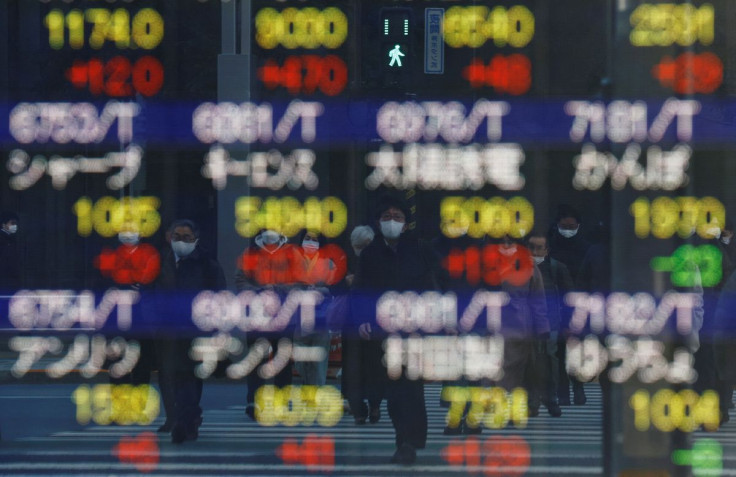U.S. Stocks Waver, Crude Plummets As Weak Data Fuels Recession Fears

Wall Street see-sawed and crude prices plunged on Monday as world factory data showed demand weakening under inflation pressures, while the looming possibility of recession curbed risk appetite.
All three major U.S. indexes were modestly higher on the first day of August, coming on the heels of the S&P 500's and the Nasdaq's biggest monthly percentage gains since 2020.
"The market's a little bit on edge, it's just trying to find its way right now," said Robert Pavlik, senior portfolio manager at Dakota Wealth in Fairfield, Connecticut. "A lot of people are trying to understand have we seen the bottom and are we going to ... move higher from here."
The Institute for Supply Management's (ISM) purchasing managers' index (PMI) showed U.S. factory activity decelerated in July to its lowest level since August 2020, but remained in expansion territory as long-running supply restraints appeared to be easing.
The report follows a swath of data from Europe and Asia that showed factory activity decelerating or contracting in the face of dampened global demand and persistent inflation.
The Dow Jones Industrial Average rose 1.53 points, or 0%, to 32,846.66, the S&P 500 gained 1.41 points, or 0.03%, to 4,131.7 and the Nasdaq Composite added 57.64 points, or 0.47%, to 12,448.33.
European stocks were essentially unchanged as fears of recession were mitigated by strong earnings from banking group HSBC.
The pan-European STOXX 600 index rose 0.01% and MSCI's gauge of stocks across the globe gained 0.31%.
FACTORY DATA
Emerging market stocks rose 0.15%. MSCI's broadest index of Asia-Pacific shares outside Japan closed 0.23% higher, while Japan's Nikkei rose 0.69%.
Crude prices headed lower as global factory data weighed on the demand outlook, and as market participants braced ahead of this week's meeting of OPEC and other oil producers concerning world crude supply.
U.S. crude fell 5.13% to $93.56 per barrel and Brent was last at $99.87, down 3.94% on the day.
U.S. Treasury yields slid in choppy trading as economic data continued to hint at an impending slowdown which could prompt the Federal Reserve to slow the pace of interest rate increases.
Benchmark 10-year notes last rose 14/32 in price to yield 2.5911%, from 2.642% late on Friday.
The 30-year bond last rose 26/32 in price to yield 2.9357%, from 2.977% late on Friday.
The dollar lost ground against a basket of world currencies as market participants weighed the probability of near-term recession.
The dollar index fell 0.52%, with the euro up 0.49% to $1.0268.
The Japanese yen strengthened 1.01% versus the greenback at 131.89 per dollar, while sterling was last trading at $1.2268, up 0.84% on the day.
Gold prices advanced as the dollar softened, as investors looked to economic data for clues regarding the pace of interest rate hikes from the U.S. Federal Reserve.
Spot gold added 0.2% to $1,769.09 an ounce.
© Copyright Thomson Reuters {{Year}}. All rights reserved.




















